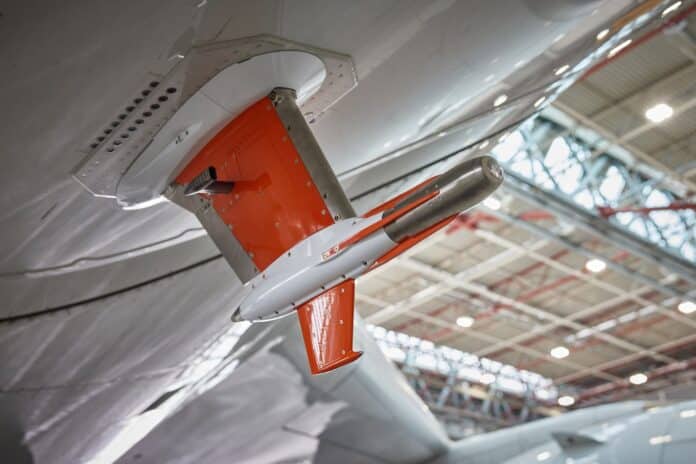A team of engineers at the Lufthansa Group and the Karlsruhe Institute of Technology (KIT) are currently working together to convert the Lufthansa Airbus A350-900 “Erfurt” into a flying research laboratory.
This unique project has now reached a significant milestone. For the first time, experts from the Lufthansa Group have attached the measuring probe system developed especially for the project to the lower fuselage of the A350 and successfully tested it in flight.
Lufthansa pilots completed a flight program coordinated with the certification authorities in the airspace over southern Germany. In addition to the air inlet function, the measuring system has sensors for high-frequency and -precision measurement of pressure and temperature.
Airbus will collect comprehensive climate data during regular passenger flights for the European research infrastructure IAGOS-CARIBIC from 2024. The project is a part of the European Research Infrastructure IAGOS (In-service Aircraft for a Global Observing System), which operates instrumentation for atmospheric observations on board passenger aircraft of commercial airlines. Its name is an acronym for ‘Civil Aircraft for the Regular Investigation of the Atmosphere Based on an Instrument Container.’
Over the next few months, a measurement laboratory weighing around two tons and specially developed for the project will be set up. Some 20 measuring instruments will be installed in the laboratory, which will later be loaded into the cargo hold as a cargo container and connected to the measuring system on the outer fuselage of the aircraft.
This high-tech laboratory will take off for the first time next year and collect climate data on selected flights in Lufthansa’s worldwide scheduled operations. The laboratory continuously records more than 100 different trace gases, aerosol, and cloud parameters from the ground to the tropopause region at an altitude of 9-13 km.
Climate-related parameters can be recorded at this altitude with significantly higher accuracy and temporal resolution on board the aircraft than would be possible with satellite- or ground-based measurement systems.
